 Call at :
+86 18681515767
Call at :
+86 18681515767
 Email :
marketing@jtspeedwork.com
Email :
marketing@jtspeedwork.com
 Call at :
+86 18681515767
Call at :
+86 18681515767
 Email :
marketing@jtspeedwork.com
Email :
marketing@jtspeedwork.com
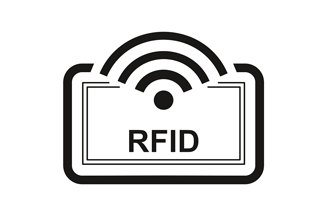
What is RFID Air Interface Communication Protocol? The air interface communication protocol is the specification of the information exchange between the reader and the tag, and the purpose is to solve the interconnection problem between the equipment of different manufacturers. ISO/IEC has formulated air interface protocols for 5 frequency bands. This idea fully reflects the relativity of standard unification. A standard is aimed at the common needs of a wide range of application systems and can meet a wider range of application needs. ISO/IEC 18000-1 Information Technology: (Radio Frequency Identification Based on Item Management)Reference Structure and Standardized Parameter Definition . It regulates the communication parameter table of the reader and the tag, the basic rules of intellectual property rights, etc., which are commonly observed in the air interface communication protocol. In this way, the standards corresponding to each frequency band do not need to repeatedly specify the same content. ISO/IEC 18000-2 Information Technology: (Radio Frequency Identification Based on Item Management) applicable to low frequency 125~134kHz, specifies the physical interface for communication between the tag and the reader, the reader should have Type A (FDX) and ability to communicate with Type B (HDX) tags; specifies protocols and commands plus anti-collision methods for multi-tag communication. ISO/IEC 18000-3 Information Technology: (Radio Frequency Identification Based on Item Management) applicable to high frequency 13.56MHz, and specifies the physical interface, protocol and command between the reader and the tag plus anti-collision methods. Anti-collision protocol can be divided into two modes, among which, mode 1 is divided into basic type and two extended protocols (multi-response protocol without time slot and non-termination and time-slot termination adaptive polling multi-transponder reading protocol): Mode 2 adopts the time-frequency multiplexing FTDMA protocol, and a total of 8 channels are suitable for the situation with a large number of tags. ISO/IEC 18000-4 Information Technology: (Radio Frequency Identification Based on Item Management) suitable for microwave band (although 2.4GHz is in the UHF frequency band, it is conventionally called the microwave band, for the same reason, 5.8GHz RFID should be in the SHF band, which is also counted in the microwave band) 2.45GHz, which specifies the physical interface, protocol and command between the reader and the tag, plus anti-collision methods. The standard includes two modes: Mode 1 is the working mode of passive tags, and the reader will talk first; Mode 2 is active tags, and the working mode is that the tag will talk first. ISO/IEC 18000-6 Information Technology: (Radio Frequency Identification Based on Item Management) is applicable to the ultra-high frequency band 840~960MHz, and specifies the physical interface, protocol and command between the reader and the tag plus anti-collision...
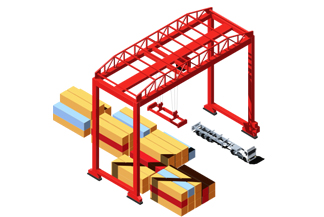
What are the basic components of an RFID system? The most basic RFID system consists of three parts: Tag (Tag): composed of coupling elements and chips, each tag has a unique electronic code, which is attached to the object to identify the target object; Reader (Reader): A device that reads (and sometimes writes) tag information, which can Designed to be hand-held or stationary; Antenna: transmits radio frequency signals between the tag and the reader.
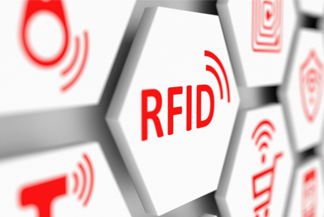
What is the RFID? RFID stands for Radio Frequency Identification.Often called inductive electronic chip or proximity card, inductive card, contactless card, electronic label, electronic bar code, etc. A complete RFID system is composed of Reader and Transponder. Its action principle is that the Reader sends an infinite wave energy of a specific frequency to The Transponder to drive the Transponder circuit to send out the internal ID Code.The Reader receives the ID Code.The special features of Transponder are battery free, contact-free and card-free, so it is not afraid of dirt. Moreover, the chip password is the only one in the world that cannot be copied, so it has high security and long life. The application of RFID is very extensive, currently the typical application is animal chip, car chip alarm device, access control, parking control, production line automation, material management.There are two types of RFID tags: active tags and passive tags.
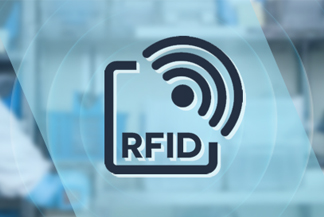
Will the use of RFID cause radiation hazards to the human body? Is there any radiation hazard when using the radio frequency of 13.56MHz, 915MHz and 2.45GHz? Radio frequency technology uses the low-end spectrum of electromagnetic waves, and the radio waves emitted by the reader are as safe and harmless as the stereo in a car. Every country has agencies that control energy levels, and the 13.56MHz frequency between AM and FM has been used for years without problems even at very high energies. The energy limit in the US and most other countries is 4 watts. The frequency emitted around the analog mobile phone is 915MHz, and no health hazards have been found in the range of energy below 1 watt. The frequency generated by the latest electronic mobile phones is 2.45GHz. Energy in the sub-1 watt range has no proven health hazard.
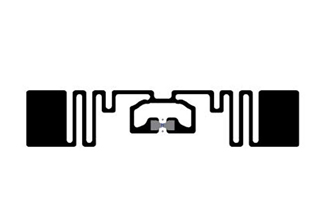
The market application scenarios of UHF RFID tags are quite broad, with the advantages of being able to read multiple tags at one time, long identification distance, fast data transmission speed, high reliability and life, and resistance to harsh outdoor environments. It can be used for asset management, production line management, supply chain management, warehousing, anti-counterfeiting traceability of various items (such as tobacco, alcohol, medicine, etc.), retail, vehicle management, etc. At present, the common UHF RFID air interface protocols in China include international standards, national standards, industry standards, and enterprise standards. The most popular standards are the 6C and 6D standards, namely ISO/IEC 18000-6C(63), ISO/IEC18000-6D(64), and the Chinese national standard GB/T 29768- 2013. The frequency band definitions of UHF electronic tags are different in the world, for example: China's frequency band 840~844MHz and 920~924MHz, EU frequency band 865MHz~868MHz, Japan frequency band 952MHz~954MHz, Hong Kong, Thailand, Singapore 920MHz~925MHz , the frequency band of the United States, Canada, Puerto Rico, Mexico, and South America is 902MHz~928MHz. 1. Environmental issues of Tag application Especially for UHF RFID products, metals and liquids have a greater impact on their performance. Therefore, the application environment is metal or non-metal, liquid or plastic, glass, wood, etc., is the primary consideration. The direct influence of raw materials on the radio frequency signal: Metal has an impact on the radio frequency signal of the RFID tag. When used in metal objects or in a working environment with a lot of metal influence, it is necessary to use anti-metal electronic tags, so as to reduce the influence of metal on the data signal of the tag. , to facilitate the normal use of RFID electronic tags. The performance of UHF RFID tags is easily affected by the environment. If you need to determine whether the product is suitable for the actual application environment, in the early test stage, the performance must be directly tested on the object to have reference value. 2. Factors affecting the label recognition distance The reading distance is also directly related to the reader and the antenna. It is necessary to clarify the installation position and angle relationship between the tag and the antenna of the reader. At the same time, parameters such as power selection, antenna gain, polarization mode, and radiation angle all belong to the categories that need to be considered. In the whole RFID system, every detail may affect the actual reading distance, and whether it can finally meet the project requirements, and even the length of the feeder (the cable connecting the antenna and the reader) needs to be considered in place. 3. The understanding of the size of the tag In many of our past project experiences, customers often want the labels to be small in size, so that they are both good-looking and eas...
2
2
pagesCategories
New Products
JT-6210 0-1m UHF RFID Desktop USB Reader Writer ISO18000-6C Read More
JT-7100 0-3m 860-960MHz UHF RFID Industrial Grade RFID Reader Read More
JT-8380 0-6m UHF RFID 860-960MHz Middle Range Integrated Reader Read More
JT-P983 Industrial Tablet Pad RFID Handheld Reader Grade Long Range Android UHF Terminal Bluetooth RFID Reader For Warehouse Read More
JT-1550 Small Mini HF RFID 13.56MHz Module ISO14443A ISO 15693 Protocol Read More
JT-2302A 13.56MHz RFID Module ISO14443A ISO15693 Protocol Read More
JT-2302 HF RFID 13.56MHz Module ISO14443A ISO15693 Support Mifare1 IC card Read More
JT-2540 TM200 UHF RFID 4-port Module 860-960MHz TTL Read More
Copyright © 2025 Shenzhen Jietong Technology Co.,Ltd. All Rights Reserved.

IPv6 network supported